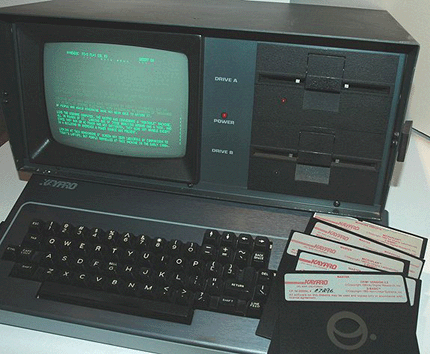In the age of lightning-fast solid-state drives and massive cloud storage, it’s hard to imagine a time when saving a single image or document required a small, plastic square barely holding 1.44 megabytes. Yet that tiny storage device—commonly known as the Stiffy Drive in some parts of the world—once revolutionized personal computing. This humble piece of technology became the backbone of data transfer, software installation, and file backup for over two decades.
This guide dives deep into the history, structure, evolution, and legacy of the Stiffy Drive, exploring how it worked, why it disappeared, and what lessons it still holds for today’s digital world.
What Is a Stiffy Drive?
The Stiffy Drive, often synonymous with the 3.5-inch floppy disk drive, was a data storage device popular in the late 1980s and 1990s. Unlike its soft, flexible predecessors—the 5.25-inch floppy disks—the stiffy version had a rigid plastic casing. That “stiff” shell inspired the nickname stiffy, particularly in South Africa, where the term became widely accepted.
Inside the protective casing was a thin magnetic disk coated with iron oxide. The drive read and wrote data using a magnetic head, allowing users to store small text files, boot operating systems, or back up essential programs.
Key Features
- Storage capacity: 720 KB (Double Density) or 1.44 MB (High Density)
- Physical size: 3.5 inches
- File system: Typically FAT12
- Used for: Boot disks, operating systems, data transfer, and backups
While these numbers seem laughably small compared to today’s terabyte drives, at the time, they represented a massive leap forward in durability and portability.
The Origin and History of the Stiffy Drive
The Stiffy Drive traces its roots to Sony, which introduced the 3.5-inch floppy disk in 1983. Before this innovation, data was stored on large, fragile 5.25-inch disks that bent easily. Sony’s new format offered more resilience and reliability, quickly becoming the industry standard.
In 1986, IBM adopted Sony’s design for its personal computers, sealing the format’s success. Within a few years, nearly every major PC manufacturer, including Apple and Compaq, began integrating these drives into their systems.
Here’s a brief timeline showing the evolution:
| Year | Development | Notable Brand or Event |
| 1983 | Sony launches 3.5-inch disk | Sony |
| 1984 | Apple includes it in Macintosh | Apple |
| 1986 | IBM adopts format | IBM |
| 1990s | Peak popularity across PCs | Microsoft, HP |
| 2000s | Decline due to CDs and USBs | Multiple vendors |
The term Stiffy Drive itself became more common in South Africa and some European countries, distinguishing the rigid 3.5-inch version from older flexible disks
How a Stiffy Drive Worked
Despite its small size, the Stiffy Drive operated using fascinating magnetic technology. Inside the casing, a rotating magnetic disk stored binary data—ones and zeros—arranged in circular tracks. When inserted into the drive, a motor spun the disk, and the read/write head accessed specific data sectors.
Each disk featured a metal shutter that protected the magnetic surface from dust and damage. When the drive accepted the disk, it slid the shutter open automatically, giving the read head access to the data.
Basic Components
- Magnetic disk – the medium for data storage.
- Spindle motor – rotated the disk at a constant speed.
- Read/write head – magnetically encoded and decoded information.
- Drive controller – communicated with the computer’s motherboard.
The file system typically used was FAT12, which divided the disk into clusters and sectors. This system enabled operating systems like MS-DOS, Windows 3.1, and Linux to recognize and manage the contents.
Diagram suggestion: a labeled sketch showing the outer casing, magnetic disk, shutter, and spindle mechanism.
Why the Stiffy Drive Was a Game-Changer
Before the stiffy, data transfer required bulky media or even physical printouts. Suddenly, users could carry entire software programs or text libraries in their pockets.
Advantages
- Durability: The hard shell protected the magnetic media.
- Portability: Easy to transport, lightweight, and pocket-sized.
- Affordability: Produced at low cost, accessible to everyday consumers.
- Compatibility: Worked across different PCs and operating systems.
Universities distributed coursework on floppy disks. Businesses used them for payroll systems and backups. Even governments relied on them for digital record-keeping.
In the 1990s, the Stiffy Drive became a universal data medium—as essential as Wi-Fi is today.
The Downfall of the Stiffy Drive
Every piece of technology eventually meets its replacement, and the stiffy was no exception. The turn of the millennium marked the start of its decline.
Limitations That Led to Obsolescence
- Limited capacity: Only 1.44 MB of storage.
- Fragile magnetic coating: Prone to corruption over time.
- Slow transfer speeds: Reading or writing files took seconds, even for small programs.
- Evolving needs: The rise of multimedia files, music, and videos demanded larger capacities.
By the early 2000s, CD-ROMs, USB drives, and external hard disks had taken over. The final blow came when PC manufacturers began shipping computers without floppy drive bays.
Case Study: In 2003, Dell announced it would stop including floppy drives in new models. This decision symbolized the end of an era, pushing users toward USB-based solutions.
The Modern Legacy of the Stiffy Drive
Though obsolete, the Stiffy Drive left a lasting imprint on computing culture. Many tech enthusiasts still collect and restore these drives as nostalgic relics of the digital revolution.
Where You’ll Still Find Them
- Vintage computer collectors and hobbyists.
- Industrial equipment: Certain CNC machines and aviation systems still rely on floppy formats.
- Museums and exhibitions: Showcasing early computer evolution.
The floppy disk icon in software programs—used to represent the Save command—remains one of the most enduring symbols of its legacy.
As one retro computing enthusiast put it:
“The stiffy drive may be gone, but it taught us that every byte counts.”
Fun Facts About Stiffy Drives
- The name stiffy confused many outside South Africa, sparking lighthearted debates in online forums.
- Early video games like Monkey Island and Doom shipped on multiple floppy disks.
- A single modern MP3 file could fill over 30 floppy disks.
- NASA’s space shuttle computers still used floppy drives well into the 2000s.
- Some modern USB floppy emulators mimic the same format for industrial use.
How to Use a Stiffy Drive Today
For tech enthusiasts or researchers, using one today is surprisingly possible. Modern external USB floppy drives can read old disks, making it easier to retrieve lost data or simply relive the nostalgia.
| Operating System | How to Use | Additional Notes |
| Windows 10/11 | Plug and play via USB | Automatically detected |
| macOS | Use USB-C to USB adapter | Some drives may need FAT12 driver |
| Linux | Mount via terminal | Full support via command line |
If you’re lucky enough to have old disks lying around, always create digital backups. The magnetic coating degrades over time, making data recovery harder each year.
Collecting and Preserving Stiffy Drives
Collectors often search online marketplaces for functioning drives and disks. While once sold for mere dollars, working models can now fetch $30–$100 depending on condition and rarity.
Tips for Preservation
- Store disks in cool, dry environments.
- Avoid magnets or direct sunlight.
- Use disk sleeves to prevent dust accumulation.
- Test occasionally using a USB drive to ensure data integrity.
Websites like eBay and Retro Computer Museum are good places to find authentic hardware.
Comparison: Stiffy Drive vs. Modern Storage
| Feature | 3.5-Inch Floppy (Stiffy) | USB Flash Drive | Cloud Storage |
| Capacity | 1.44 MB | Up to 2 TB | Virtually unlimited |
| Speed | Very slow | Very fast | Instant |
| Durability | Moderate | High | N/A |
| Portability | High | Excellent | Remote |
| Reliability | Low (magnetic decay) | High | Depends on internet |
| Current Use | Obsolete | Everyday use | Dominant trend |
Despite being replaced, the Stiffy Drive played a vital role in paving the path toward portable and digital data management.
Why the Stiffy Drive Still Matters
Beyond its technological function, the stiffy represents a milestone in human innovation. It made computing personal and mobile, laying the groundwork for the devices we rely on today.
Its compact design taught engineers valuable lessons about miniaturization, data formatting, and user-friendly design. The same engineering spirit lives on in USB drives and solid-state memory cards.
Modern Takeaway
Even though technology evolves rapidly, every new device stands on the shoulders of its predecessors. Just as the stiffy replaced older floppies, it paved the way for modern flash and cloud storage systems.
Conclusion: A Small Device with a Big Legacy
The Stiffy Drive wasn’t just a piece of plastic—it was a bridge between the analog and digital worlds. It allowed ordinary users to explore computing beyond the confines of massive mainframes. Its compact design, portability, and universal acceptance shaped the way we think about data storage.
As technology continues to advance, the legacy of this modest drive reminds us of an essential truth: innovation often starts small. What once seemed like the pinnacle of technology is now a nostalgic relic—but one that played a crucial part in our digital story.
So, next time you click that little floppy disk icon to save your work, take a moment to remember the tiny hero that made it all possible.










Leave a Reply